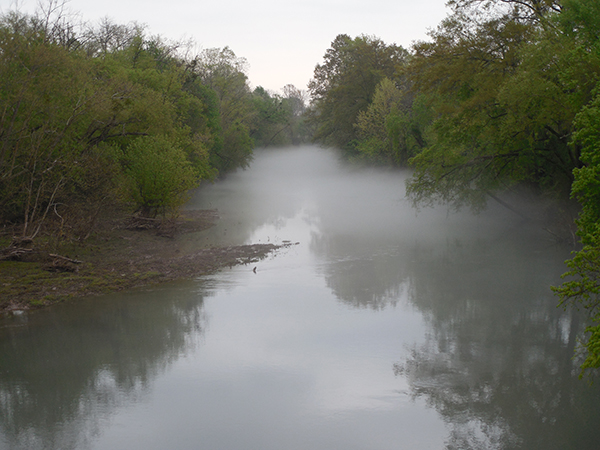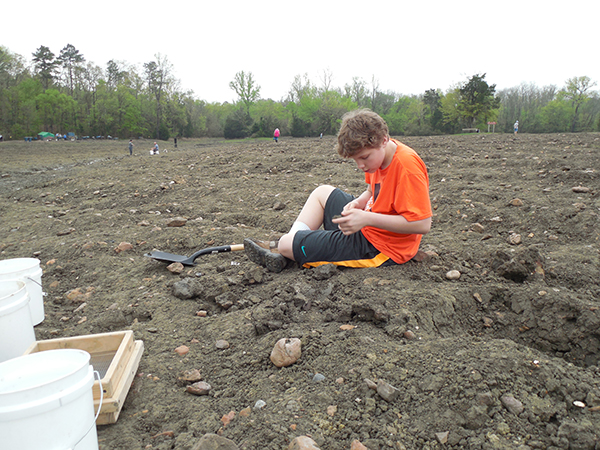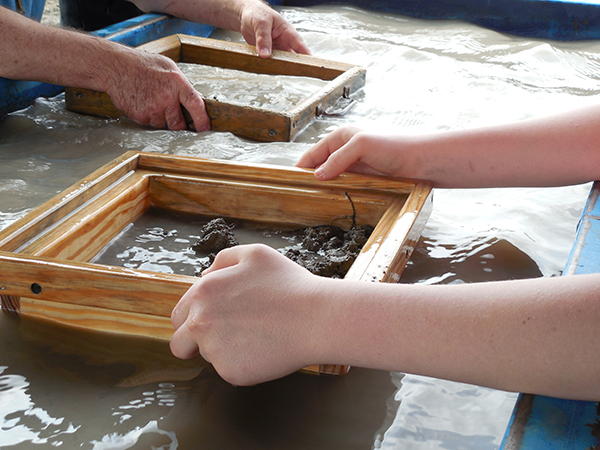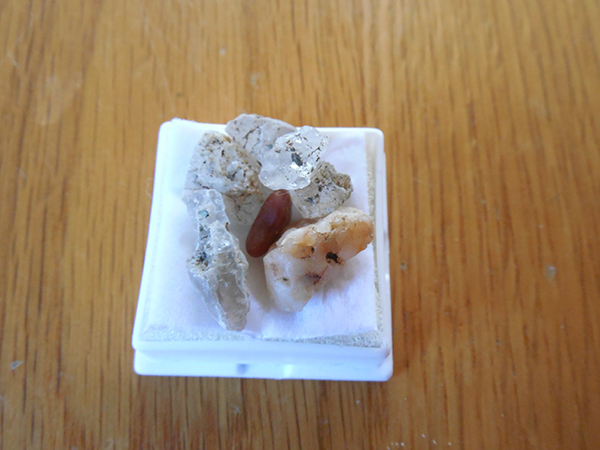Fencerows: Crater of Diamonds
By John Luthens
Trekking to southwestern Arkansas to mine for diamonds was measured in my mind against Klondike gold in northern Alaska. I’m not a prospector and had never been to either place. I only held visions of what it would be like.
Thoughts of Alaska were easy. They garnered snow-capped mountains; Rushing streams splitting boulders, gold pans glistening in the morning sun, the sound of pickaxes and sluicing water echoing from a mountain valley as I filled leather pouches with nuggets of fame and fortune.
What I knew for certain of Arkansas came only from maps, music and hogs. It was a whole lot closer to Wisconsin than the Klondike, stretching somewhere below the Ozark Mountains. It was the birthplace of Johnny Cash, and the distinct pluck of banjo music resonated in my ears when I envisioned it. I recalled something concerning wild Razorbacks but, as far as the landscape was concerned, I simply couldn’t picture it.
All I had to go on were small and shining rumors that an ancient volcano had spit diamonds into a crater in southwestern Arkansas, and it was said those diamonds were there for the taking. It was early April and I had five days of idle spring break to strike it rich. I didn’t own a pickaxe, much less a leather pouch. I weighed frozen Yukon gold against sun-splashed Arkansas diamonds. Then, with my mother as chief navigator and my son riding shotgun, our expedition saddled up and headed south.

The Little Missouri River at daybreak.
There were no covered-wagon trails. There were only miles of freeway winding down through Illinois and Missouri. The Arkansas license plate featured the likeness of a diamond in the center, and the cotton and soybean fields of the Mississippi Delta were shimmering. They were flat as a table and filled with the flood waters of spring.
We’d arranged accommodations in the southwestern corner of the state, somewhere outside of Murfreesboro, Arkansas, at an aptly-named camp called Diamond John’s. I knew the general destination, but it was well after dark when freeway asphalt turned into the back roads of the Deep South. And it was only then that I began to know the wild beauty that lurked in the crater of diamonds.

Tyler Luthens sifts through Crater of Diamonds State Park in southwestern Arkansas.
Loblolly Pines grew heavy against the roadside with vines wrapped and hung from the trees. Small deer watched curiously as we passed. We rolled down the windows to the sound of a million frogs, and the air smelled humid and alive, like a growing jungle pulling us in. The stars popped above in unbelievable clarity. Besides the stars and our wavering headlights, there was only the darkness of a crater and the rumor of diamonds below.
We crossed a heavy stone bridge with mist rising from the Little Missouri River below. I pictured water moccasin snakes hanging from branches. There was a glowing porch light through the trees and campfire smoke in the air. A crescent moon slid above the horizon and, I kid you not, I heard a rooster crow. Teepees rose along the river bank and a friendly retriever crawled from beneath the porch and wagged behind us.

Wet sifting in the sluice boxes.
Diamond John, himself, was absent and shrouded in mystery, but his charming wife, Claire, showed us to our bunks. I voted for a teepee, but was overruled by a two-thirds majority, so our party drew a small log cabin, complete with satellite television, air conditioning and a hot tub out back. It was no place for a self-respecting prospector to hang his hat but, as I fell asleep in an unbelievably comfortable bed, I reckoned I’d have to make due.
The roosters called us awake in the morning, and we collected shovels, buckets, and sifting boxes. They were left for us by Diamond John, although he was still nowhere to be seen, and I’d begun to wonder if he wasn’t just a legend. Regardless, we would find the tools to be more than just a luxury when we entered the crater.
Crater of Diamonds State Park encompasses 911 acres along the Little Missouri River. The park is the only diamond-producing area in North America that is open to the public. A 37-acre field site sits along the eroded volcanic pipe that belched up stones from the earth’s core. Over 75,000 diamonds have reportedly been found since they were first discovered in the crater in 1906, with the largest on record weighing in at 40.23 carats, making it the largest diamond ever found in North America.
Over the course of three days in the diamond fields, we tried the three treasure-hunting methods recommended to us: surface searching, which is as simple as crawling across the furrows of the field and hoping to catch a glimmer in the sun; dry sifting, where dirt is broken into a sifter and allowed to fall through, leaving the bigger stones behind; and finally, wet sifting, which became our prospecting method of choice.
In wet sifting, you dig deep with a shovel into the Arkansas mud, in order to reach the gravel beneath where diamonds have settled. Buckets of dirt and gravel are hauled across the field to sluice boxes of water that are set in several areas of the park. The dirt is strained through a coarse screen into a finer one to catch the gravel. The gravel is then turned upside down on a table. If sifted correctly, the heavier stones should have settled to the bottom and will be visible when the gravel is spread upon the table.

Dividends of the diamond fields.
Wet sifting is by far the best way to unearth the secrets hidden in mud and gravel. It also involves a ton of sweat and tedious examination. We found that the line between diamonds and back-breaking labor is very thin. Countless buckets of dirt were reduced to a tiny pile of quartz, jasper, and amethyst. My mom is having the best crystal set in a ring, while my son tallied the best find, unearthing a rare, geode agate.
We never unearthed one, but the diamonds were out there. Taking a break from our sun-scorched prospecting, we went into Murfreesboro for ice cream. The town square held several small shops with the largest selection of rough-cut diamonds I have ever seen. The townspeople brimmed with southern hospitality, as white, yellow and brown diamonds were set before us to view.
And Diamond John, I finally cornered him. It was our last night, and a thunderstorm rolled across the crater. He was a thin and hardened by the Arkansas sun, and there was fire in his eyes. Beneath two, mounted deer heads on his front porch, and between brilliant flashes of lightning; I sat and heard tales of fame and fortune, tales of intrigue and destiny. I heard the history of the finest diamonds and the finest diamond miners to ever circle the rim of the crater.
In a final flash of lightning, there were diamonds in the air itself. I saw clearly the vines and the heavy grasses. I smelled the southern pines and river bottoms, and I felt the wet earth beneath my feet. I’d struck it rich. I finally had a picture of Arkansas diamonds to set in the treasure box of my mind.











